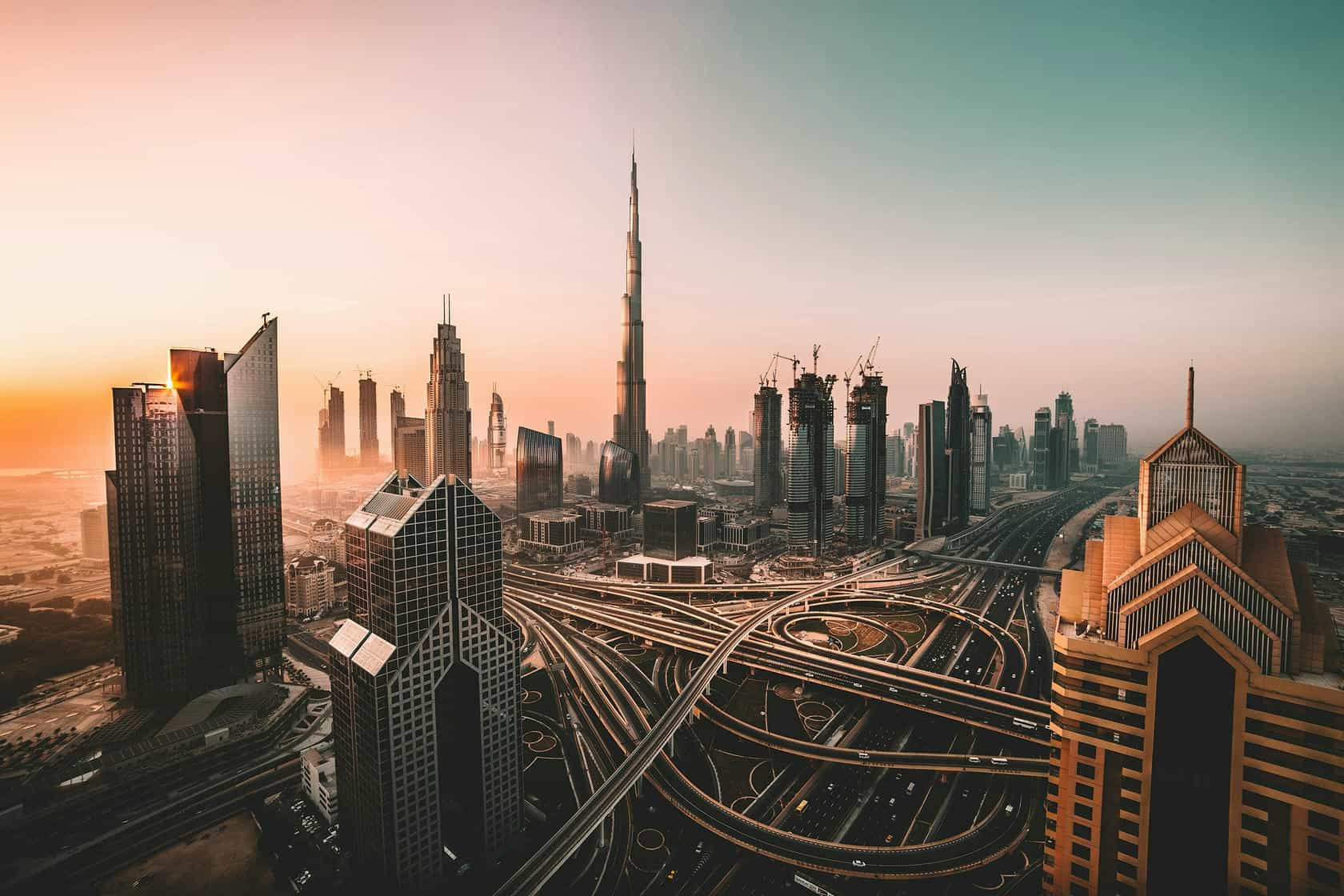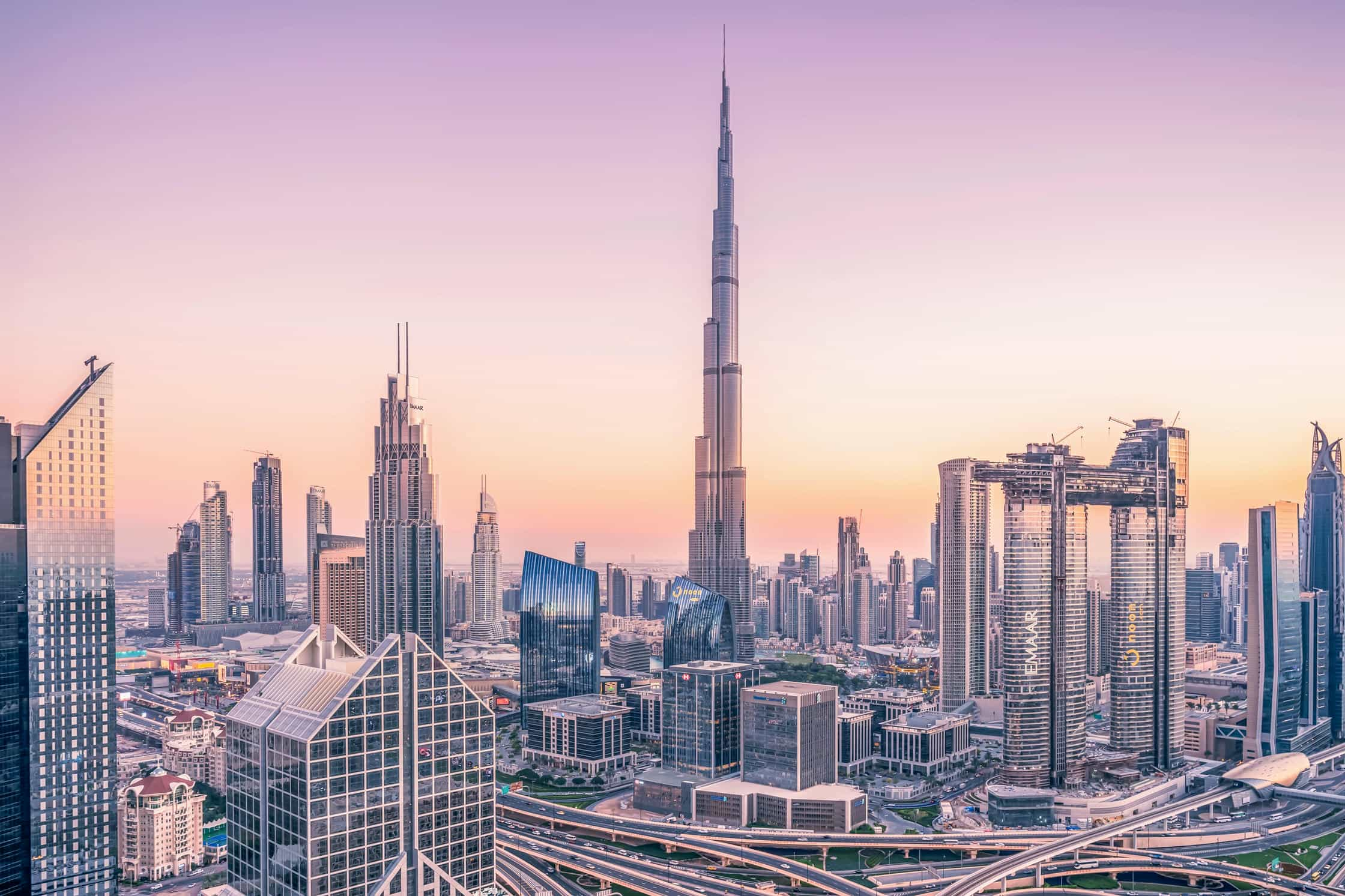Ultimate UAE Travel Guide 2025: Dubai, Abu Dhabi & Hidden Gems
Honestly, I never expected the UAE to completely change my perspective on Middle Eastern travel. Having visited over forty countries, I’ll be completely frank—I initially dismissed it as just another expensive stopover destination. What a mistake that was. The United Arab Emirates isn’t just about glittering skyscrapers and luxury shopping (though there’s plenty of that). It’s a fascinating blend of ancient Bedouin culture and futuristic innovation that genuinely surprised me at every turn.
According to recent tourism data1, the UAE welcomed over 24 million visitors in 2023, making it one of the world’s fastest-growing travel destinations. But here’s what those statistics don’t tell you—the real magic happens when you venture beyond the obvious tourist spots and discover the authentic experiences that locals cherish.
Why the UAE Should Be Your Next Adventure
Let me paint you a picture. Picture this: you’re sipping traditional Arabic coffee in a centuries-old souk, bargaining for hand-woven textiles while the call to prayer echoes across the city. Fast forward two hours, and you’re dining at a Michelin-starred restaurant 200 meters above the ground, watching the sunset paint the Persian Gulf in brilliant oranges and purples. This isn’t some travel brochure fantasy—it’s a typical day in the UAE.
UAE Quick Facts
Official Name: United Arab Emirates
Population: 9.4 million (2023)
Currency: UAE Dirham (AED)
Best Time to Visit: November to March
Languages: Arabic (official), English widely spoken
Time Zone: UTC+4
What struck me most during my first visit wasn’t the world’s tallest building or the indoor ski slope—though those are genuinely impressive. It was the warmth of Emirati hospitality and the seamless way this young nation has preserved its heritage while embracing modernity. I remember having dinner with a local family in Al Ain, where the grandfather shared stories of pearl diving while his grandson designed apps for Dubai’s smart city initiatives. That’s the UAE in a nutshell.
When to Visit: Timing Your UAE Adventure
Here’s where I need to be completely honest with you—timing is absolutely crucial for UAE travel. I made the rookie mistake of visiting in July once. Never again. The summer months (June to September) are brutally hot, with temperatures regularly exceeding 45°C (113°F). Trust me, you don’t want to explore outdoor markets or walk along the beaches when the pavement can literally burn your feet through sneakers.
The sweet spot? November through March, when temperatures hover around a comfortable 20-30°C (68-86°F). This is peak season, which means higher prices and larger crowds, but the weather is absolutely perfect for everything from desert camping to beach days. I’ve consistently found that December and January offer the best balance of pleasant weather and reasonable hotel rates2.
Insider’s Weather Wisdom
April and May can be fantastic months for budget-conscious travelers. The weather’s still manageable, hotel prices drop significantly, and you’ll have attractions mostly to yourself. Just pack layers—morning temperatures can be quite cool, while afternoons get warm quickly.
One thing I learned the hard way: even during the cooler months, the desert can get surprisingly cold at night. Pack a light jacket or sweater, especially if you’re planning overnight desert experiences. The temperature difference between day and night can be dramatic—I once experienced a 20-degree temperature drop after sunset during a desert safari.
Dubai: Beyond the Glitter
Dubai gets a bad rap for being artificial, and I get it. The city’s rapid transformation from fishing village to global metropolis in just fifty years does feel surreal. But here’s what I’ve discovered after multiple visits—Dubai’s magic isn’t just in its record-breaking architecture. It’s in the incredible diversity of experiences you can have in a single day.
Take the Dubai Creek, for instance. This narrow waterway might not look like much compared to the Burj Khalifa, but it’s the heart of Old Dubai. I spent an entire afternoon riding traditional abra boats3 between the Gold and Spice Souks, chatting with Pakistani traders who’ve been selling frankincense and saffron for decades. The contrast with the gleaming Dubai Mall just a few kilometers away is striking—and intentional.
Must-Experience Dubai Attractions
Everyone talks about the Burj Khalifa, and yes, it’s impressive. But honestly? The views from the 124th floor observation deck can be disappointing on hazy days, which is more common than you’d think. I much prefer the Dubai Frame—it offers stunning panoramic views of both old and new Dubai, and the glass floor walkway gives you that adrenaline rush without the hefty price tag.
- Dubai Marina: Perfect for evening strolls and waterfront dining
- Jumeirah Beach: Clean, well-maintained, with excellent beach clubs
- Al Fahidi Historic District: Authentic Emirati architecture and culture
- Dubai Miracle Garden: Seasonal (November-May) but absolutely stunning
The Dubai Mall deserves special mention—not just for shopping, but as a cultural experience. The Dubai Aquarium inside is genuinely world-class, and the food court offers everything from Japanese ramen to Ethiopian injera. I’ve spent entire days there just people-watching and sampling different cuisines.
Desert Adventures: Beyond the Tourist Trail
Most visitors book generic desert safaris, and they’re fine—but you’re missing out on the real desert experience. After trying several options, I’ve found that overnight desert camping with smaller operators provides infinitely more authentic experiences. Sleeping under the Arabian stars, learning traditional Bedouin cooking techniques, and waking up to sunrise over the dunes—it’s magical in ways that typical day tours simply can’t match.
| Desert Experience | Duration | Price Range (AED) | Best For |
|---|---|---|---|
| Evening Safari | 6 hours | 200-400 | First-time visitors |
| Overnight Camping | 24 hours | 800-1,200 | Authentic experience |
| Luxury Glamping | 2-3 days | 2,000-5,000 | Comfort seekers |
Pro tip from someone who learned this the hard way: book desert experiences for weekdays if possible. Weekend desert camps can feel more like outdoor nightclubs than peaceful retreats. Also, bring a good camera—the desert photography opportunities are incredible, especially during the golden hour.
Dubai’s Hidden Culinary Scene
Dubai’s food scene extends far beyond hotel restaurants and mall food courts. Some of my most memorable meals have been at hole-in-the-wall places in Deira and Bur Dubai. The Lebanese restaurants along Al Dhiyafah Road serve some of the best hummus and shawarma outside of Beirut, and the Indian restaurants in Karama offer incredibly authentic cuisine at fraction of hotel prices4.
Don’t miss the Dubai Food Festival if you’re visiting in February or March. It’s become a genuine celebration of the city’s multicultural food scene, with pop-up restaurants, street food markets, and cooking workshops. I attended a traditional Emirati cooking class during the festival—learned to make proper machboos (spiced rice with meat) that I still cook at home.

Abu Dhabi: The Cultural Heart of the UAE
If Dubai is the UAE’s flashy younger sibling, Abu Dhabi is the sophisticated older brother. As the capital and largest emirate, it has a completely different energy—more refined, more culturally focused, and honestly, more authentically Emirati. I’ll admit, I initially planned to spend just two days in Abu Dhabi during my first UAE trip. That was a mistake. The city deserves at least four to five days to properly appreciate its cultural offerings.
The Sheikh Zayed Grand Mosque is absolutely non-negotiable. I know, I know—everyone says that. But having visited over a hundred mosques worldwide, I can confidently say this is something special. The architectural details are breathtaking, from the intricate floral patterns inlaid with precious stones to the world’s largest hand-knotted carpet5. More importantly, the free guided tours provide genuine insights into Islamic culture and architecture.
Cultural Institutions Worth Your Time
The Louvre Abu Dhabi genuinely surprised me. I was skeptical about a “franchise” museum, but the building itself is architectural poetry—the dome creates this incredible “rain of light” effect that changes throughout the day. The collection spans human history and civilization, focusing on universal themes rather than Western art history. It’s thoughtfully curated and refreshingly different from traditional museum experiences.
- Louvre Abu Dhabi: Revolutionary museum experience with stunning architecture
- Qasr Al Hosn: Abu Dhabi’s oldest stone building, excellent cultural center
- Emirates Palace: Luxury hotel worth visiting for afternoon tea
- Heritage Village: Traditional Emirati crafts and lifestyle demonstrations
The upcoming Guggenheim Abu Dhabi and Natural History Museum will further establish the city as a major cultural destination. But even now, the cultural district on Saadiyat Island offers enough to justify a dedicated cultural tourism trip.
Practical Planning: Visas, Transportation, and Budgeting
Let me address the practical stuff that travel guides often gloss over. UAE visa requirements are straightforward for most nationalities—citizens of about 50 countries get visa-free entry, others can get visa on arrival, and some need advance visas6. The process is generally hassle-free, but double-check current requirements before traveling.
Money-Saving Transportation Tips
The Dubai Metro is clean, efficient, and incredibly affordable. A day pass costs about 20 AED (roughly $5 USD) and covers most major attractions. In Abu Dhabi, the bus system is excellent but less tourist-friendly—consider renting a car or using ride-sharing apps for maximum flexibility.
Currency-wise, the UAE Dirham is pegged to the US dollar, making budgeting straightforward for American travelers. Credit cards are widely accepted, but keep some cash for souks, taxi tips, and smaller establishments. ATMs are everywhere and usually offer competitive exchange rates.
Budget Breakdown: Making the UAE Affordable
Contrary to popular belief, the UAE doesn’t have to break the bank. Yes, you can spend $1,000 per night on hotels and $500 per meal at celebrity chef restaurants. But you can also have incredible experiences on a modest budget. I’ve traveled through the UAE on everything from backpacker budgets to luxury splurges, and honestly, some of my best memories came from the cheaper experiences.
| Budget Category | Daily Cost (AED) | Accommodation | Dining Style |
|---|---|---|---|
| Backpacker | 150-250 | Hostels, budget hotels | Street food, local restaurants |
| Mid-Range | 400-600 | 3-4 star hotels | Mix of local and international |
| Luxury | 1,000+ | 5-star resorts | Fine dining, hotel restaurants |
The key to budget travel in the UAE is mixing experiences. Stay in a mid-range hotel, eat at local restaurants for lunch, and splurge on one or two special dinners. Visit free attractions like beaches and mosques, then invest in unique experiences like desert camping or cultural tours. This approach gives you the best of both worlds without emptying your wallet.
Beyond Dubai and Abu Dhabi: Other Emirates
Most visitors never leave Dubai and Abu Dhabi, which is a shame. The other emirates offer completely different experiences that showcase the UAE’s diversity. Sharjah is the cultural capital with excellent museums and traditional architecture. Ras Al Khaimah has stunning mountain scenery and the world’s longest zipline. Fujairah offers beautiful beaches on the Indian Ocean side, completely different from the Persian Gulf coast7.
I particularly love Al Ain, Abu Dhabi’s “Garden City.” It’s cooler, greener, and feels more traditionally Arabian. The camel market is fascinating, the UNESCO World Heritage oasis sites are peaceful, and Jebel Hafeet mountain offers incredible sunset views. Plus, it’s significantly cheaper than Dubai or Abu Dhabi—a nice break for your budget.
Sustainable Travel: Respecting Culture and Environment
The UAE has made significant commitments to sustainability and environmental protection, despite its oil-rich reputation. Dubai aims to become the world’s most sustainable city by 2050, and Abu Dhabi is home to Masdar City, one of the world’s most ambitious sustainable urban development projects8. As travelers, we can support these efforts through conscious choices.
Cultural sensitivity is equally important. The UAE is remarkably tolerant and cosmopolitan, but it’s still an Islamic country with conservative values. I’ve seen too many tourists unknowingly offend locals through inappropriate dress or behavior. It’s really not difficult to be respectful—just requires a bit of awareness and consideration.
Cultural Etiquette Essentials
- Dress modestly in public spaces, especially when visiting mosques or traditional areas
- Avoid public displays of affection—holding hands is generally acceptable, but keep it subtle
- Don’t photograph people without permission, especially women in traditional dress
- Be mindful during Ramadan—don’t eat, drink, or smoke in public during daylight hours
Eco-Friendly Travel Options
The UAE’s public transportation systems are excellent and environmentally friendly. Dubai’s metro system is one of the world’s longest automated networks, and it’s significantly more sustainable than taxis or rental cars. Many hotels now offer electric vehicle charging stations, and car-sharing services are expanding rapidly.
For accommodations, look for hotels with Green Key or similar sustainability certifications. Many luxury resorts now offer comprehensive sustainability programs, from coral reef restoration projects to locally-sourced dining options. The Al Maha Desert Resort, for example, has been successfully conserving Arabian wildlife for over twenty years while providing luxury experiences.
Supporting Local Communities
One aspect of UAE travel that doesn’t get enough attention is the opportunity to support local artisans and small businesses. The traditional souks aren’t just tourist attractions—they’re living marketplaces where local craftspeople sell their work. I always try to buy directly from makers rather than souvenir shops, even if it costs a bit more.
Consider staying in boutique hotels or guesthouses rather than international chains. Book tours with local operators who employ Emirati guides and support conservation efforts. Eat at family-owned restaurants that serve traditional cuisine made with local ingredients. These choices make your travel more authentic and economically beneficial to local communities.
Safety and Accessibility
The UAE is one of the world’s safest travel destinations, with extremely low crime rates and excellent emergency services9. Healthcare standards are high, particularly in Dubai and Abu Dhabi, with many doctors trained in Western medical schools. Travel insurance is still recommended, but you’re unlikely to need it for safety reasons.
Accessibility infrastructure is generally excellent, especially in newer developments. Dubai Metro stations are fully wheelchair accessible, major attractions provide accessibility services, and many hotels offer comprehensive accessibility amenities. The UAE has made significant investments in inclusive tourism infrastructure.
Final Thoughts: Making the Most of Your UAE Journey
Looking back on my various UAE trips, what stands out isn’t the record-breaking buildings or luxury experiences—though those are memorable. It’s the conversations with locals, the quiet moments watching sunset from a traditional dhow, and the realization that this young nation has created something genuinely unique in the modern world.
The UAE rewards curious travelers who look beyond the surface. Yes, visit the Burj Khalifa and Dubai Mall. Shop in the souks and try the street food. But also attend a cultural event, take a cooking class, or simply sit in a traditional coffeehouse and observe daily life. These experiences will give you a deeper appreciation for Emirati culture and the remarkable transformation this region has undergone.
The UAE continues to evolve and expand its tourism offerings. New attractions, cultural institutions, and experiences are constantly being developed. Whether you’re interested in luxury travel, cultural exploration, adventure activities, or sustainable tourism, the UAE offers something special. The key is approaching it with an open mind and genuine curiosity about this fascinating corner of the world.
References



